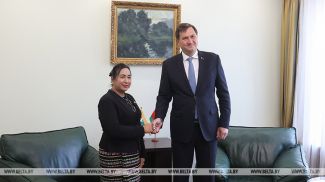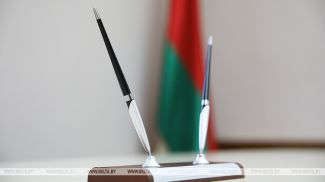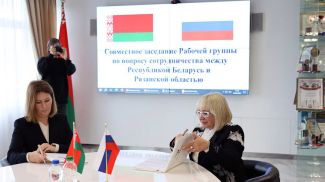MINSK, 31 December (BelTA) – Belarus' GDP per capita is third in the Commonwealth of Independent States in terms of the purchasing power parity (PPP), representatives of the National Statistics Committee of Belarus told BelTA.
The conclusion has been prompted by analyzing the main results of international comparisons of the gross domestic product in the CIS states and the group of countries coordinated by the Organization for Economic Cooperation and Development – Eurostat. In line with the global round of the international comparison program for the year 2011 Belarus' GDP in PPP terms totaled $157.3 billion. The GDP per capita reached $16,603, earning Belarus the third place in the CIS states after Russia and Kazakhstan.
The decision to conduct a regular global round of GDP comparisons based on purchasing power parity using the year 2011 data was made by the 39th session of the UN Statistics Commission. The World Bank coordinated the efforts to prepare and conduct the global round.
The global round covered 194 countries and individual economic territories. The comparison relied on the regional principle. All the participating states were divided into six regions: the Commonwealth of Independent States, the united group of countries OECD-EU, Asia and the Pacific, Western Asia, Africa, Latin America and the Caribbean.
The CIS Statistics Committee was in charge of coordinating comparisons in the Commonwealth of Independent States. The year 2011 global round of comparisons involved Azerbaijan, Armenia, Belarus, Kazakhstan, Kyrgyzstan, Moldova, Russia, Tajikistan, and Ukraine.
The key result of the international comparison program is a statistically justified calculation of purchasing power parities for all participants of the round and its recalculation into a single currency using the GDP as a whole and its major components. The data is then used as the foundation for detailed comparative researches of the scale and structure of various economies. The influence of official currency exchange rates and national pricing peculiarities is ruled out. The purchasing power parity represents a number of monetary units sufficient for buying a standard set of merchandise and services that can be bought for one monetary unit of the basic country (or one monetary unit of the common currency of a group of countries).
The full results of the global round of the international comparison program for the year 2011 will be published in March 2014.
The conclusion has been prompted by analyzing the main results of international comparisons of the gross domestic product in the CIS states and the group of countries coordinated by the Organization for Economic Cooperation and Development – Eurostat. In line with the global round of the international comparison program for the year 2011 Belarus' GDP in PPP terms totaled $157.3 billion. The GDP per capita reached $16,603, earning Belarus the third place in the CIS states after Russia and Kazakhstan.
The decision to conduct a regular global round of GDP comparisons based on purchasing power parity using the year 2011 data was made by the 39th session of the UN Statistics Commission. The World Bank coordinated the efforts to prepare and conduct the global round.
The global round covered 194 countries and individual economic territories. The comparison relied on the regional principle. All the participating states were divided into six regions: the Commonwealth of Independent States, the united group of countries OECD-EU, Asia and the Pacific, Western Asia, Africa, Latin America and the Caribbean.
The CIS Statistics Committee was in charge of coordinating comparisons in the Commonwealth of Independent States. The year 2011 global round of comparisons involved Azerbaijan, Armenia, Belarus, Kazakhstan, Kyrgyzstan, Moldova, Russia, Tajikistan, and Ukraine.
The key result of the international comparison program is a statistically justified calculation of purchasing power parities for all participants of the round and its recalculation into a single currency using the GDP as a whole and its major components. The data is then used as the foundation for detailed comparative researches of the scale and structure of various economies. The influence of official currency exchange rates and national pricing peculiarities is ruled out. The purchasing power parity represents a number of monetary units sufficient for buying a standard set of merchandise and services that can be bought for one monetary unit of the basic country (or one monetary unit of the common currency of a group of countries).
The full results of the global round of the international comparison program for the year 2011 will be published in March 2014.













